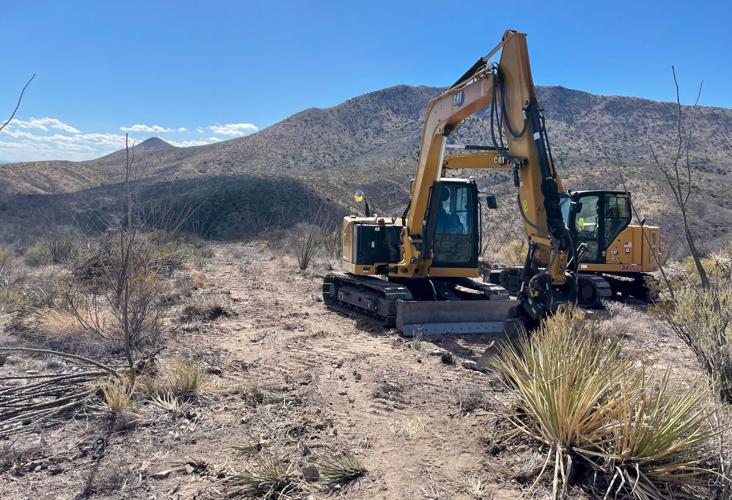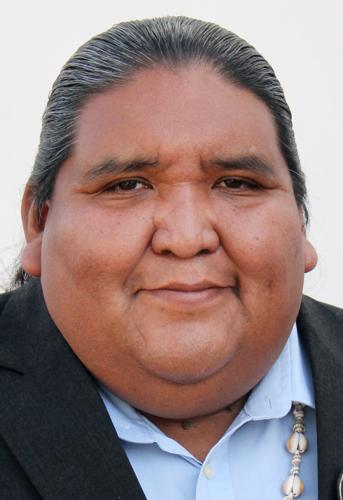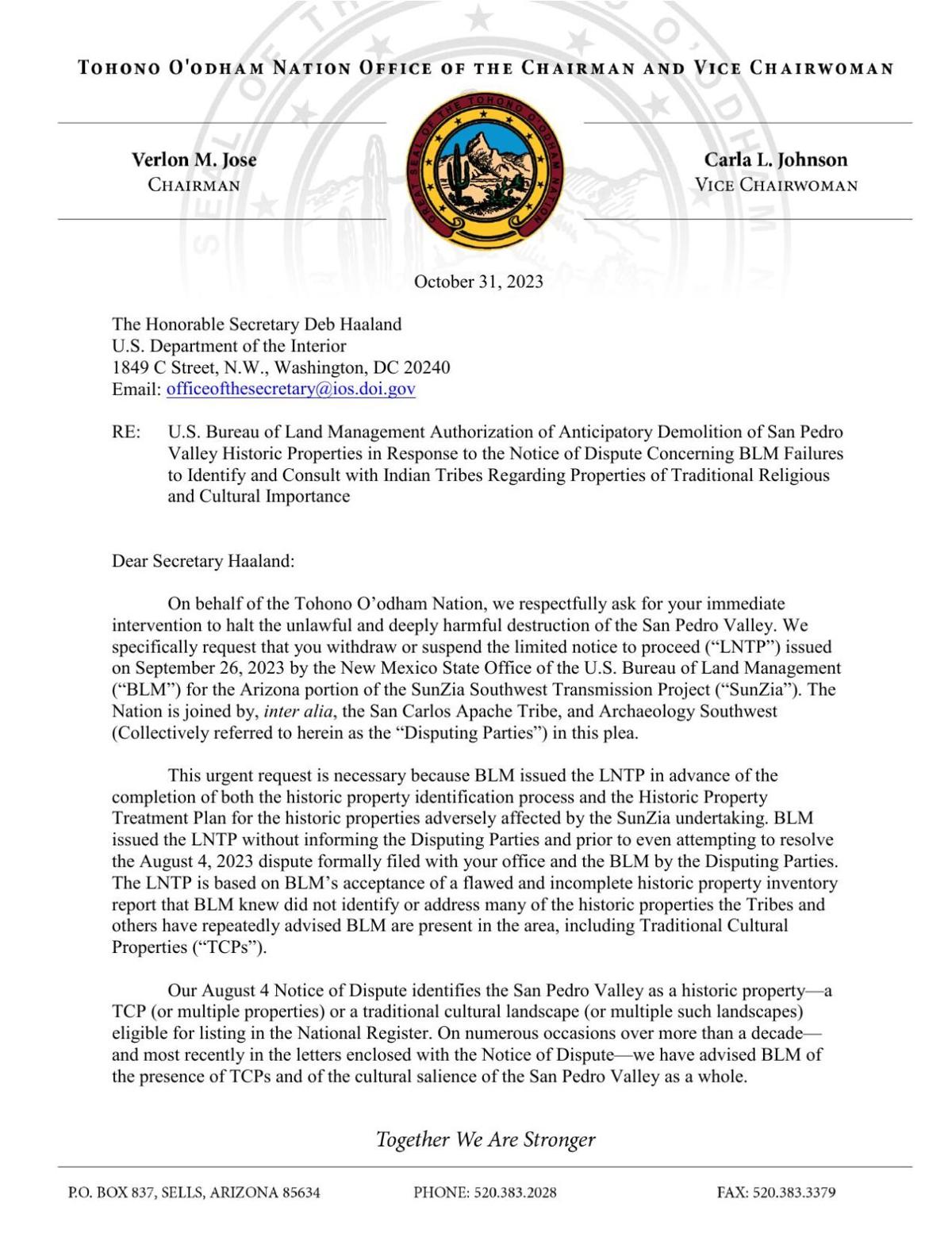The chairman of the Tohono O’odham Nation is calling for an immediate halt to construction of a new wind-energy transmission line through the Lower San Pedro River Valley east of Tucson to protect cultural sites.
In an “urgent request” to Interior Secretary Deb Haaland on Tuesday, Tohono O’odham Chairman Verlon Jose asked her to stop “the unlawful and deeply harmful destruction of the San Pedro Valley” by workers cutting roads and clearing pads for the 550-mile-long SunZia Southwest Transmission Project.
San Francisco-based Pattern Energy is building the line to deliver power from a 3,500-megawatt wind energy project the company is also building across three counties in central New Mexico.

Construction equipment waits at the site of work in the San Pedro Valley for the SunZia Southwest Transmission Project on Oct. 29, 2023.
Pattern plans to erect about 780 towers, some as much as 195 feet tall, along a 200-mile corridor that enters Arizona in southern Greenlee County and ends up in central Pinal County.
The powerline would cross the sparsely populated and biologically rich valley along the San Pedro River about 15 miles north of Benson, then run along the eastern foothills of the Rincon Mountains on its way toward San Manuel and Oracle.
Jose’s letter to Haaland included a photo, taken on Oct. 28 a little over a mile from the San Pedro, showing a bulldozer on a freshly scraped patch of desert.
“We hope you will agree that bulldozers are poor tools for consultations or for treating places having exceptional significance in O’odham, Apache, and Zuni religion, culture, and history,” the tribal leader writes.
Pattern Energy spokesman Matt Dallas said the company "fully respects the heritage, history and sovereignty of Indigenous peoples."
"Since the initiation of the SunZia permitting process in 2009, we have actively (worked), and will continue to work, to address the tribal concerns" identified as part of the official consultation process between the tribes and the federal government, Dallas said in a written statement.
It’s unclear how much work is already underway on the powerline project. Dallas did not respond to questions about construction activity in the San Pedro River Valley and elsewhere in Arizona.
The renewable giant hopes to complete the transmission line by 2026, when SunZia Wind is slated to begin commercial operation as the largest wind-energy development in the Western Hemisphere, with enough capacity to serve more than 1 million people.
The combined generation and transmission projects are expected to cost about $8 billion, which Pattern touts as the largest renewable energy infrastructure investment in U.S. history.
Several national environmental groups have come out in favor of SunZia, and the Biden administration has called it a “milestone” on the path toward a nationwide clean-energy grid by 2035.
In May, the U.S. Bureau of Land Management gave final approval for construction of the transmission project across federal land.
In August, the Tohono O’odham, the San Carlos Apache Tribe and Tucson-based Archaeology Southwest filed a formal dispute with the Interior Department, accusing the BLM of failing to properly identify historic sites in the San Pedro Valley or address the adverse effects to such sites as a result of the powerline.
The notice of dispute also accuses bureau officials of ignoring input and “explicit requests for consultation” from the tribes for more than a decade.
According to Jose, the BLM office in New Mexico initially responded to the dispute from the tribes with “heartening” talk of ongoing consultation and collaboration to address their concerns. It wasn’t until later that the tribes discovered the bureau had already “authorized heavy equipment operations to build roads and clear transmission line tower pads in San Pedro Valley,” Jose writes.

Verlon Jose
Bill Doelle, president and CEO of Archaeology Southwest, said the BLM has only cleared Pattern to begin work in areas that don’t have cultural resources in them, but that distinction provides little comfort to the four tribes that consider the entire San Pedro Valley to be “a traditional cultural landscape.”
All of this conflict could have been avoided, Doelle said, by routing SunZia through an existing transmission corridor instead of punching a new one through a remote valley some have called “one of the last great places” in America.
“I’m all for green energy, when it’s being done responsibly. We’re all stuck on the same hot Earth,” he said. “In this case, it’s not being done responsibly.”
Get your morning recap of today's local news and read the full stories here: tucne.ws/morning








